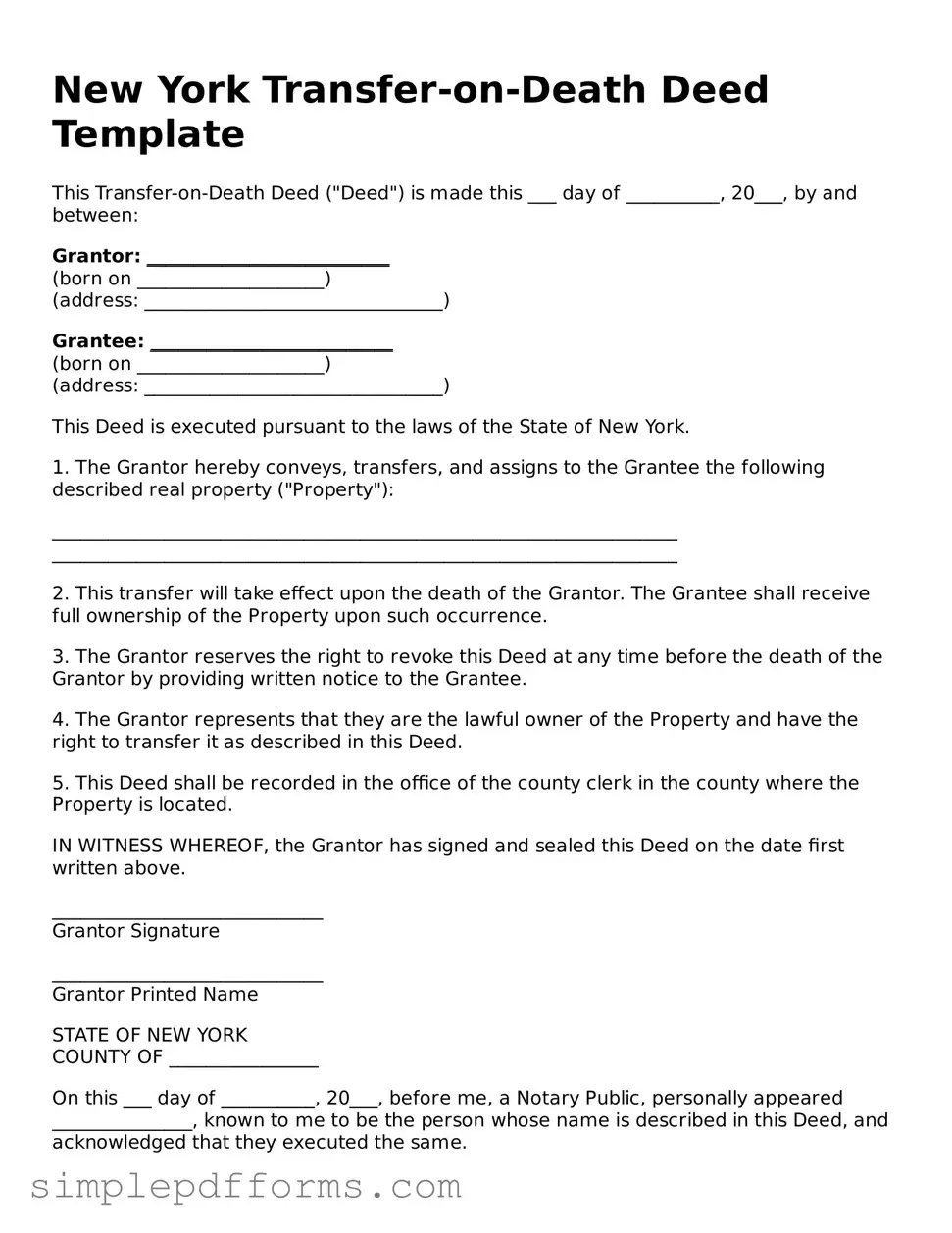New York Transfer-on-Death Deed Template
This Transfer-on-Death Deed ("Deed") is made this ___ day of __________, 20___, by and between:
Grantor: __________________________
(born on ____________________)
(address: ________________________________)
Grantee: __________________________
(born on ____________________)
(address: ________________________________)
This Deed is executed pursuant to the laws of the State of New York.
1. The Grantor hereby conveys, transfers, and assigns to the Grantee the following described real property ("Property"):
___________________________________________________________________
___________________________________________________________________
2. This transfer will take effect upon the death of the Grantor. The Grantee shall receive full ownership of the Property upon such occurrence.
3. The Grantor reserves the right to revoke this Deed at any time before the death of the Grantor by providing written notice to the Grantee.
4. The Grantor represents that they are the lawful owner of the Property and have the right to transfer it as described in this Deed.
5. This Deed shall be recorded in the office of the county clerk in the county where the Property is located.
IN WITNESS WHEREOF, the Grantor has signed and sealed this Deed on the date first written above.
_____________________________
Grantor Signature
_____________________________
Grantor Printed Name
STATE OF NEW YORK
COUNTY OF ________________
On this ___ day of __________, 20___, before me, a Notary Public, personally appeared _______________, known to me to be the person whose name is described in this Deed, and acknowledged that they executed the same.
_______________________________
Notary Public
